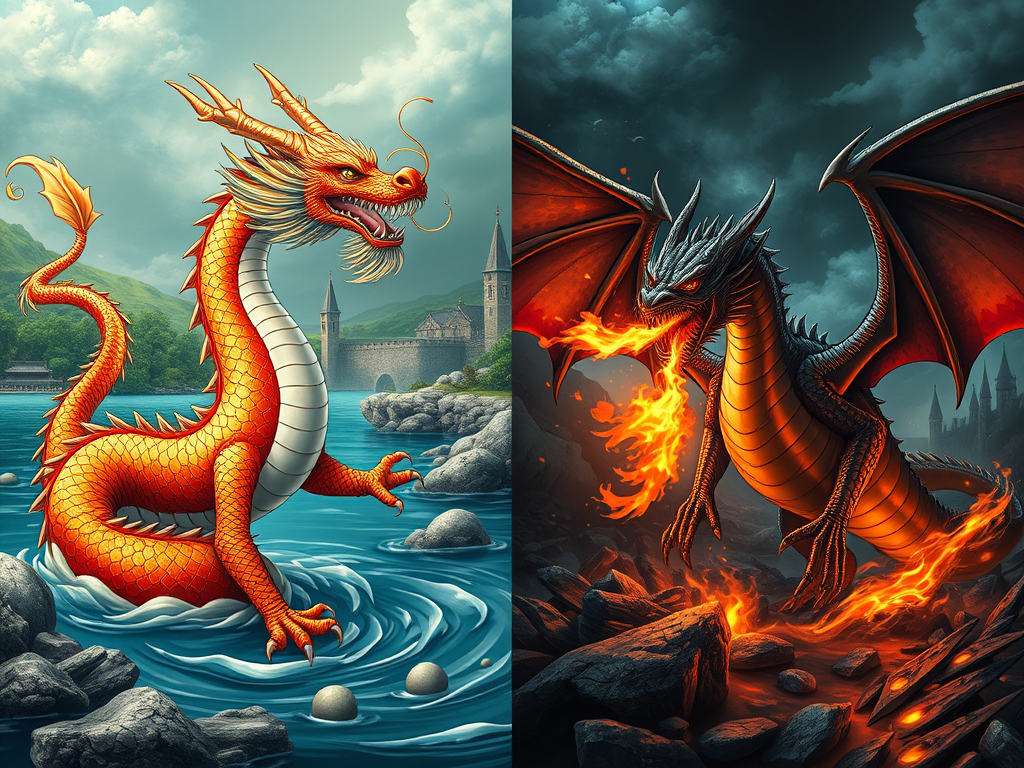Chinese dragons are iconic symbols deeply rooted in Chinese culture, representing power, strength, and good fortune. These mythical creatures have been depicted in various forms of Chinese art for centuries, captivating the imagination and embodying the spirit of Chinese folklore.
his guide will walk you through the process, from gathering materials to adding intricate details, so you can create your own magnificent Chinese dragon.
Historical Background
The imagery of dragons in Chinese culture dates back thousands of years, with the earliest depictions appearing in Neolithic pottery and jade carvings. Throughout various dynasties, dragon motifs evolved, reflecting the artistic styles and cultural values of each period. In ancient China, dragons were revered as benevolent creatures associated with rain, rivers, and agriculture. They were considered protectors of the land, capable of controlling the elements and bringing prosperity.
During the Han dynasty (206 BCE – 220 CE), dragons began to be portrayed more elaborately, with intricate designs symbolizing imperial power and divine authority. The Tang (618-907 CE) and Song (960-1279 CE) dynasties saw further refinement in dragon art, with more sophisticated brushwork and detailed features. Dragons continued to be prominent in Ming (1368-1644 CE) and Qing (1644-1912 CE) dynasty artworks, often depicted in imperial robes and on official seals, signifying their continued importance in Chinese culture.
Traditional Techniques and Styles
Drawing a Chinese dragon requires understanding traditional Chinese art techniques. Artists use specific materials and methods to capture the dragon’s essence and intricacy. Here are some essential elements:
- Brushwork: Traditional Chinese dragon drawings are often created using ink brushes. The control of brush strokes is crucial to depicting the dragon’s sinuous body and intricate scales.
- Ink and Paper: High-quality rice paper and ink are typically used. The texture of the paper and the fluidity of the ink play a significant role in the final artwork.
- Styles: There are various styles of dragon drawings, ranging from highly detailed and realistic to minimalist and abstract. Calligraphic dragons, which emphasize the fluidity and elegance of lines, are also popular.
Famous artists like Chen Rong of the Song dynasty are renowned for their dragon paintings, which showcase masterful brushwork and dynamic compositions.
Step-by-Step Guide to Drawing a Chinese Dragon
For those interested in drawing a Chinese dragon, here’s a step-by-step guide:
Materials Needed:
- Brushes (various sizes)
- Ink (black and colored, if desired)
- Rice paper or any high-quality drawing paper
- A palette for mixing ink
Step 1: Outline the Body
Begin with a light sketch to lay out the basic shape and flow of the dragon. Use a pencil for this initial step.
- Draw the Head: Start with a small oval for the head. Add guidelines for the placement of facial features.
- Create the Body Line: Extend a long, flowing line from the head to represent the dragon’s body. Think of this line as a river, curving and twisting to show movement and grace.
- Add the Tail: The tail should taper off from the body line, ending in a pointed or flared shape.
Step 2: Define Basic Shapes and Proportions
- Sketch the Body: Draw an elongated, snake-like body around your guiding line. The body should be thicker near the head and gradually thin out towards the tail.
- Add Limbs: Sketch the limbs at various points along the body. Chinese dragons typically have four limbs, each with sharp, clawed feet.
- Outline the Head: Refine the head by adding features such as the snout, eyes, and horns. Chinese dragons often have long, curved horns and a pair of whiskers or tendrils flowing from the snout.
Step 3: Add Details and Features
- Draw the Scales: Add scales along the body, starting with small, overlapping shapes. The scales should follow the curves of the body and vary in size, becoming smaller near the tail and limbs.
- Detail the Claws: Define the claws, ensuring they are sharp and curved. Each limb should have three to five claws.
- Enhance the Face: Draw the eyes, giving them a fierce and intense look. Add the nostrils, and detail the horns and whiskers.
Step 4: Final Touches and Texturing
- Inking the Outline: Using a fine-tipped brush and black ink, go over your pencil sketch. Pay attention to the fluidity of your lines, especially along the body and scales.
- Add Texture: Use varying brush strokes to add texture to the scales, horns, and limbs. Lighter, quicker strokes can indicate highlights and areas of light reflection.
- Detail the Background (Optional): Consider adding traditional elements like clouds, waves, or mountains to enhance the composition and provide context for your dragon.
Step 5: Coloring (Optional)
If you wish to add color to your drawing, use traditional Chinese watercolor techniques:
- Layer and Blend: Gradually add layers, blending the colors to create depth and vibrancy. Use darker shades for shadows and lighter tones for highlights.
2. Choose Your Colors: Red, gold, and green are common colors for Chinese dragons, symbolizing different attributes like power and prosperity.
3. Apply the Base Colors: Start with light washes to fill in the main areas of the dragon.
Modern Interpretations and Trends
In contemporary art, Chinese dragons continue to inspire artists globally. Digital art has introduced new techniques, allowing for more intricate and vibrant dragon depictions. Modern artists often blend traditional styles with innovative approaches, creating unique and captivating artworks. Social media platforms and digital galleries have made it easier for artists to share their work and for enthusiasts to find inspiration.
Conclusion
The art of Chinese dragon drawing is a fascinating blend of history, mythology, and artistic skill. These majestic creatures continue to captivate and inspire, symbolizing power, strength, and good fortune. Whether you are an aspiring artist or simply an admirer of Chinese culture, drawing a Chinese dragon can be a rewarding and enriching experience.




Leave a comment